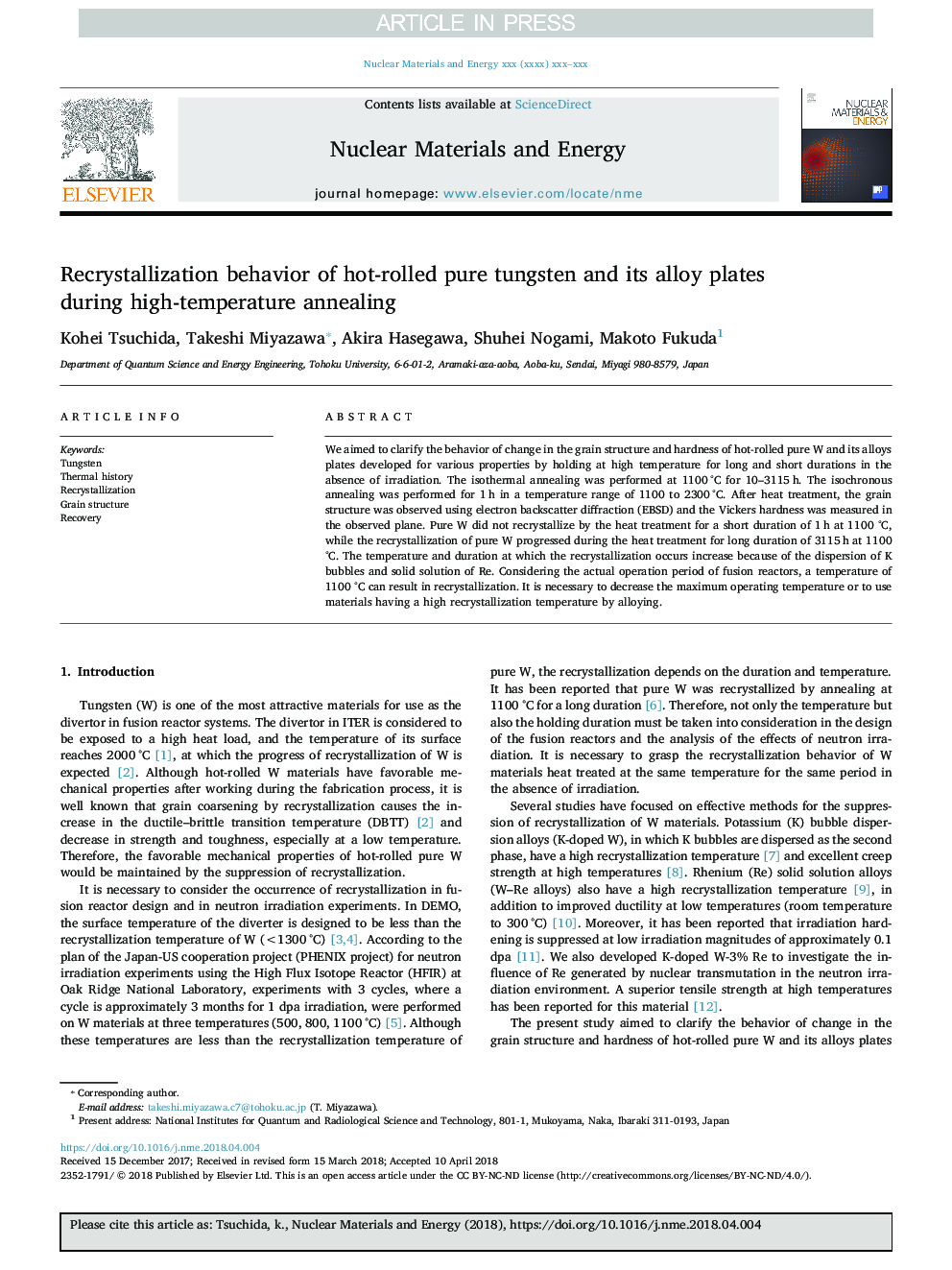| Article ID | Journal | Published Year | Pages | File Type |
|---|---|---|---|---|
| 7987319 | Nuclear Materials and Energy | 2018 | 6 Pages |
Abstract
We aimed to clarify the behavior of change in the grain structure and hardness of hot-rolled pure W and its alloys plates developed for various properties by holding at high temperature for long and short durations in the absence of irradiation. The isothermal annealing was performed at 1100â¯Â°C for 10-3115â¯h. The isochronous annealing was performed for 1â¯h in a temperature range of 1100 to 2300â¯Â°C. After heat treatment, the grain structure was observed using electron backscatter diffraction (EBSD) and the Vickers hardness was measured in the observed plane. Pure W did not recrystallize by the heat treatment for a short duration of 1â¯h at 1100 °C, while the recrystallization of pure W progressed during the heat treatment for long duration of 3115â¯h at 1100 °C. The temperature and duration at which the recrystallization occurs increase because of the dispersion of K bubbles and solid solution of Re. Considering the actual operation period of fusion reactors, a temperature of 1100 °C can result in recrystallization. It is necessary to decrease the maximum operating temperature or to use materials having a high recrystallization temperature by alloying.
Related Topics
Physical Sciences and Engineering
Energy
Nuclear Energy and Engineering
Authors
Kohei Tsuchida, Takeshi Miyazawa, Akira Hasegawa, Shuhei Nogami, Makoto Fukuda,
